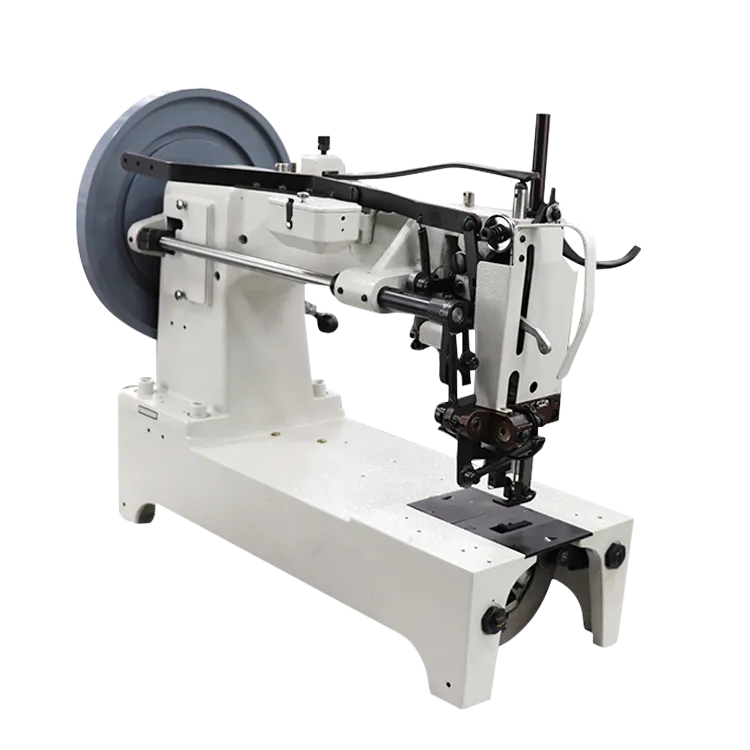Understanding the Purpose and Benefits of an Overlocker Machine
What is an Overlocker?
An overlocker, also known as a serger, is a specialized sewing machine designed to finish the edges of fabric to prevent fraying while also allowing for stretch and flexibility in seams. Unlike a regular sewing machine, which typically uses one or two needles and a single straight stitch, an overlocker utilizes multiple threads and employs a unique stitch formation technique. This makes it an essential tool for both professional tailors and home sewing enthusiasts alike.
How Does an Overlocker Work?
The magic of an overlocker lies in its ability to stitch, trim, and finish fabric edges in one go. It typically uses three or four threads, which intersect and wrap around the edges of the fabric to create a strong, durable seam. This not only prevents fraying but also allows the garment to maintain its shape and stretch, particularly for knit fabrics like jerseys and spandex.
An overlocker has a cutting blade that trims the fabric as you sew. This is especially useful for working with pre-cut fabrics or when finishing raw edges that would otherwise require additional steps like zigzag stitching on a traditional sewing machine. The speed of an overlocker also sets it apart; it can sew at a significantly higher rate than conventional machines, making it efficient for mass production or for completing projects quickly.
Uses of an Overlocker
Overlockers are predominantly used for finishing seams in garments, but their versatility extends far beyond that. Here are some common uses
1. Seam Finishing As mentioned, an overlocker finishes raw edges to prevent fraying. This is especially crucial for knit fabrics that are more prone to stretching and fraying.
2. Creating Stretchy Seams For garments made from elastic materials, an overlock stitch allows for the seam to stretch with the fabric, ensuring comfort and durability.
3. Rolled Hems An overlocker can create beautiful rolled hems for lightweight fabrics like chiffon and tulle, giving a professional finish to garments like evening dresses or costume pieces.
what is an overlocker for

4. Flatlock Stitches This stitch is popular in sportswear, allowing pieces to be joined with less bulk. It’s comfortable against the skin and often used in activewear and swimwear.
5. Decorative Edging Many overlockers allow for various stitch options that can be used decoratively, enhancing the design of a project.
Choosing the Right Overlocker
When selecting an overlocker, there are several factors to consider
- Thread Count Most overlockers will have 3 or 4 thread options. A 4-thread machine is versatile and can handle most uses, while a 3-thread machine is generally lighter and may be more affordable.
- Differential Feed This feature allows for the adjustment of fabric feeding, preventing stretching or puckering, which is particularly useful for working with knits.
- Ease of Use Look for machines that offer color-coded threading guides and easy-to-access tension controls to make your sewing experience smoother.
- Accessories Consider what additional feet and attachments come with the machine, as these can greatly enhance functionality.
Conclusion
An overlocker is an invaluable addition to any sewing room, providing efficiency and a professional finish that is difficult to achieve with a regular sewing machine alone. Whether you are a seasoned tailor or a beginner looking to delve into garment making, understanding how to use an overlocker can elevate your sewing projects to the next level. With its specialized capabilities, an overlocker not only saves time but also offers the quality and precision that can make your garments stand out.
-
Industrial Cylinder Arm Sewing Machine: Revolutionizing Heavy-Duty SewingNewsJul.28,2025
-
Cylinder Arm Sewing Machine: Perfect for Special Sewing ApplicationsNewsJul.28,2025
-
Cylinder Bed Sewing Machine: Essential for Sewing Complex MaterialsNewsJul.28,2025
-
Heavy Duty Sewing Machine: The Essential Tool for Industrial ApplicationsNewsJul.28,2025
-
Computerized Pattern Sewing Machine: Revolutionizing Precision StitchingNewsJul.28,2025
-
Heavy Duty Industrial Sewing Machine: Power Meets PrecisionNewsJul.28,2025
-
Leather Sewing Machine: The Industrial Standard for Tough MaterialsNewsJul.18,2025





























